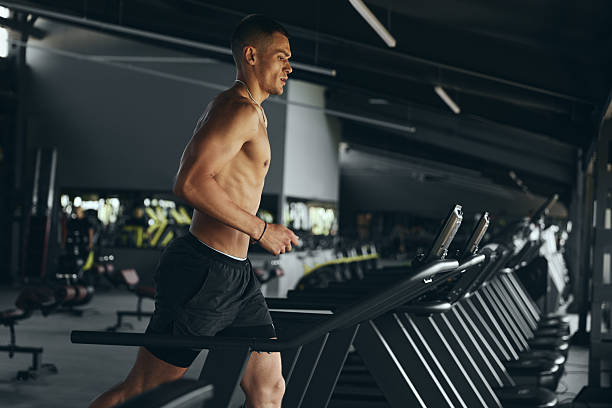Functional Training for Men Over 30: Regain Strength Safely
Why Training Needs to Change After 30 Hitting your 30s often comes with subtle reminders that your body is no longer 20. Recovery takes longer, nagging pains pop up more frequently, and energy levels may dip. It’s not about giving up — it’s about training smarter. As men age, muscle mass naturally declines, joint mobility decreases, and injury risk rises. But this doesn’t mean you should stop pushing your body — it means adapting your strategy. In your 20s, training might have focused on aesthetics or peak performance. After 30, functionality, injury prevention, and sustainability should become the core goals of your fitness journey. A functional fitness program helps you move better, feel stronger, and remain injury-free — whether you're chasing your kids or carrying groceries up the stairs.
The New Priorities: Injury Prevention and Functional Strength
In your 30s and beyond, injury prevention isn’t optional — it’s essential. This doesn’t mean you avoid challenges, but you do need to build a more resilient body from the ground up.
Common Injuries After 30
- Lower back strain
- Shoulder impingement
- Knee overuse or tracking issues
- Tight hips and hamstrings
These often result from years of desk work, lack of mobility, and poor movement patterns. Addressing these issues through functional training — which mimics real-life movements — is critical.
Focus on Movement Quality
Functional fitness emphasizes movement patterns: squat, hinge, push, pull, carry, and rotate. Training these movements improves strength in real-world activities and strengthens stabilizing muscles that support joint health.
Build Everyday Athleticism
You don’t need to train like an athlete to move like one. Functional strength training improves:
- Balance and coordination
- Core strength
- Joint stability
- Mobility and flexibility
These qualities are the foundation for pain-free movement and injury prevention — key priorities for men in their 30s and beyond.
Full-Body Training Plan Using Bodyweight, Resistance Bands, and Kettlebells
You don’t need a gym membership or fancy machines. With your bodyweight, a few resistance bands, and a kettlebell or two, you can build functional strength at home.
Weekly Structure
3–4 sessions/week, each 30–45 minutes:
- Day 1: Bodyweight Strength & Mobility
- Day 2: Resistance Band Core & Stability
- Day 3: Kettlebell Power & Conditioning
- Day 4 (optional): Mobility + Light Circuit
Key Training Principles
- Compound movements over isolation exercises
- Progressive overload (increase reps, resistance, or tempo weekly)
- Active recovery (walks, stretching, breathwork)
- Rest at least one day between sessions
Sample Workouts
Bodyweight Strength & Mobility (Day 1)
- Deep bodyweight squats – 3x15
- Push-ups (standard or incline) – 3x10–15
- Glute bridges – 3x20
- Bird-dogs – 3x10/side
- World's greatest stretch – 2x per side
Resistance Band Core & Stability (Day 2)
- Banded rows – 3x12
- Banded glute kickbacks – 3x15/leg
- Standing pallof press – 3x10/side
- Band-assisted dead bug – 3x10
- Thoracic rotation with band – 2x10/side
Kettlebell Power & Conditioning (Day 3)
- Kettlebell swings – 4x15
- Goblet squats – 4x10
- Kettlebell one-arm rows – 3x8/side
- Kettlebell farmer’s carries – 3 rounds, 30 sec
- Turkish get-up (optional) – 2/side
Optional Recovery Circuit (Day 4)
- Light cardio (jump rope, air squats)
- Dynamic stretches (leg swings, shoulder circles)
- Core activation (plank, side plank)
- Breathwork and foam rolling
Recovery Tools and Techniques You Shouldn’t Skip
Training is only half the equation — recovery makes progress possible. As your body ages, it becomes even more important to recover smarter.
Dynamic Stretching
Before workouts, dynamic stretches activate your nervous system and prepare muscles and joints. Think leg swings, arm circles, hip openers.
Foam Rolling & Massage Guns
Used after training or on rest days, foam rollers and massage guns help release tight fascia, reduce soreness, and promote circulation.
- Focus on quads, hamstrings, glutes, back, and shoulders.
- Spend 30–60 seconds per area.
- Breathe deeply to enhance muscle relaxation.
Prioritize Rest and Breathwork
Sleep is where recovery happens — aim for 7–8 hours. Combine this with breathing exercises (box breathing, nasal breathing) to reduce stress and improve focus and recovery.
Final Thoughts: Consistency Over Intensity
Regaining your fitness after 30 isn’t about chasing personal records or pushing to the limit. It’s about showing up consistently, listening to your body, and training with purpose. Functional training builds strength that lasts and supports your everyday life — now and for decades to come.
